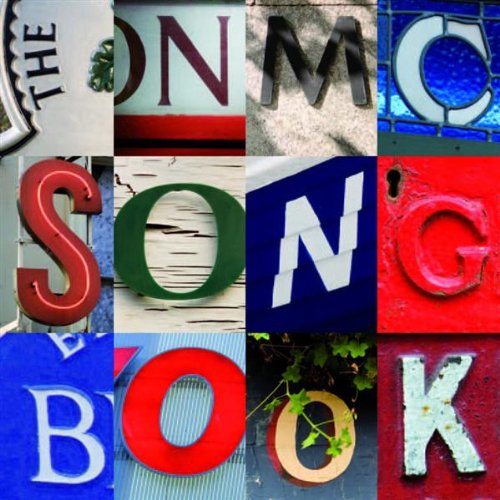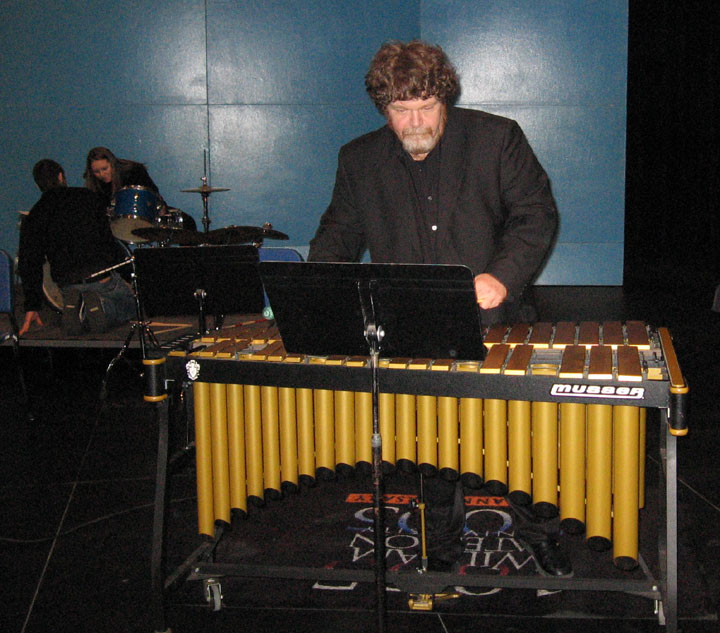 The days dwindle down. For April we had only three remaining programs conducted by Esa-Pekka Salonen as music director of the Los Angeles Philharmonic, and after last night only two programs remain. Last night’s Green Umbrella concert gave us a look forward, plus just a touch of reminiscence. There could well have been a concert of Salonen’s works, but a retrospective of the man as composer (and as engine for the Green Umbrella series) can wait for a future year and a future visit. Instead, the program was a beautifully selected set of four world premieres by composers new to almost every one in the Disney Hall audience. And for the selection, in addition to Salonen we have to honor the inputs of the Phil’s advisor for new music, Steven Stucky, who began his “brief” work with the orchestra over 20 years ago, when Andre Previn was music director. Stucky will be leaving his position with the Phil next season. He has been a pleasure.
The days dwindle down. For April we had only three remaining programs conducted by Esa-Pekka Salonen as music director of the Los Angeles Philharmonic, and after last night only two programs remain. Last night’s Green Umbrella concert gave us a look forward, plus just a touch of reminiscence. There could well have been a concert of Salonen’s works, but a retrospective of the man as composer (and as engine for the Green Umbrella series) can wait for a future year and a future visit. Instead, the program was a beautifully selected set of four world premieres by composers new to almost every one in the Disney Hall audience. And for the selection, in addition to Salonen we have to honor the inputs of the Phil’s advisor for new music, Steven Stucky, who began his “brief” work with the orchestra over 20 years ago, when Andre Previn was music director. Stucky will be leaving his position with the Phil next season. He has been a pleasure.
The four composers whose works were premiered were born in four different countries: Mexico, Britain, the U.S., and China. All with at least one other country and language in their current lives. One man and three women. Born between 1974 and 1980. All composers whose names we should look for, whose music we should hear.
First up was Enrico Chapela, who gave an interview to Sequenza21 back in January, just before another of his works was performed at BAM. His work Li Po is a composition for 18 musicians (eight winds, eight strings, two percussion) for a prismatic combination of shifting sounds and colors. The work came with a lengthy text of the poem on which the work was apparently based, but Chapela had abstracted the words for the pitches and stress of the sounds, not for the meaning of individual vowels and consonants. The musical structure was complex, crying for a second hearing, but completely fascinating as it evolved. Listening to the work I was unaware of the passage of time. Really interesting.
Within Her Arms by Anna Clyne provided a fascinating change. It is a work for 15 strings, three each of violins I and II, violas, cellos and basses. What could be the melody of a lyrical folk song is taken up by the instruments, sometimes in sections, sometimes individually, repeated, reflected, recombined, and then a return to the original melody. Clyne achieved depth and complexity and interest from her skills with simplicity.
Mouthpiece XI was a showpiece for the composer, Erin Gee, as vocalist. The work is for singer with electronics; Gee ambidextrously switched between two microphones, one for pops and clicks, one for pitched sounds. Sixteen instrumentalists, including three percussionists, provide the instrumental sounds. Gee now lives and works in Austria. The work is from a series of Mouthpiece works that explore the instrumentality of a voice. Reviews linked on her web site indicate that she has used the two-microphone approach to vocal sound in at least one earlier work, Sleep.
After intemission, the Phil’s New Music Group performed Deluge by Fang Man. This work was for the largest ensemble (22) and seemed the most complex of the four new works. Her program notes describe the work as being inspired by a Kandinsky painting, and the center of Kandinsky’s work became, for her, the center of “Deluge” with water evoked by a major role for the harp. Again, complexity made it difficult to grasp her sense in just a single hearing by the composer.
As prelude to the concert, the Phil presented video images of Salonen as conductor of the Phil. When he walked on stage, the 1500 or so in the audience rose to their feet to honor the man. To close the concert, Salonen conducted singer and ensemble (of 5) in Floof, a Salonen work he first brought to the Green Umbrella series 18 years ago, the year before he became music director. Yes, this musical “jabberwocky” sounded like a work from twenty years ago. We know that Salonen as composer has moved into other approaches to music. But the bright, sparkling, sounds by coloratura supported by cello, contrabass clarinet, keyboards and percussion remained entertaining and sheer fun.
This work was first performed when the Green Umbrella series was performed at the Japan America Theatre downtown. Having 100 in the audience was a decent turn-out for some of those concerts. But thanks to Salonen, and Ernest Fleischman, and Lillian Disney and Frank Gehry, the program persisted, and grew.



